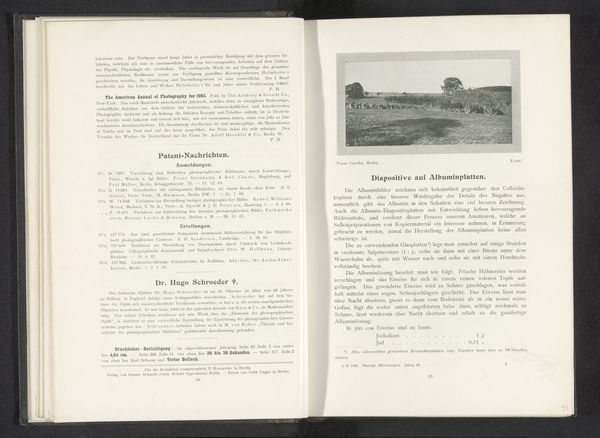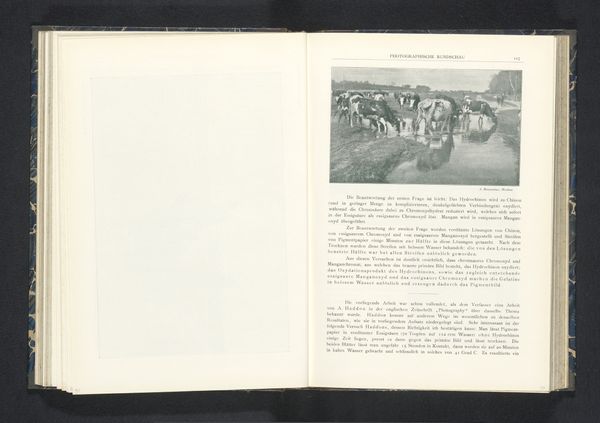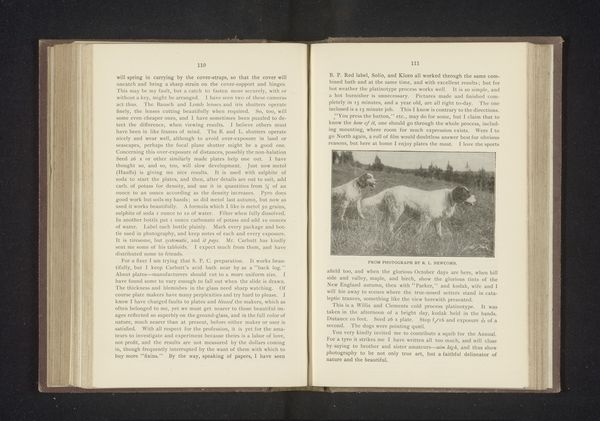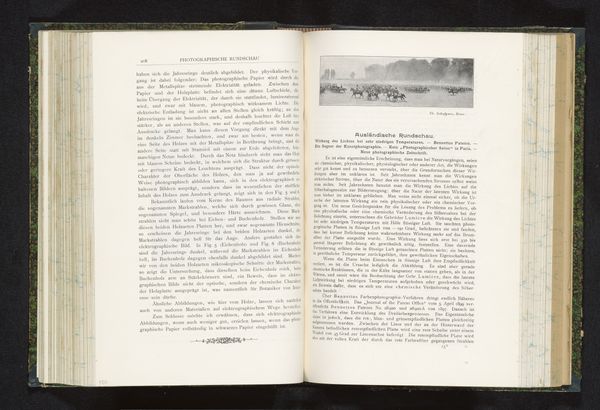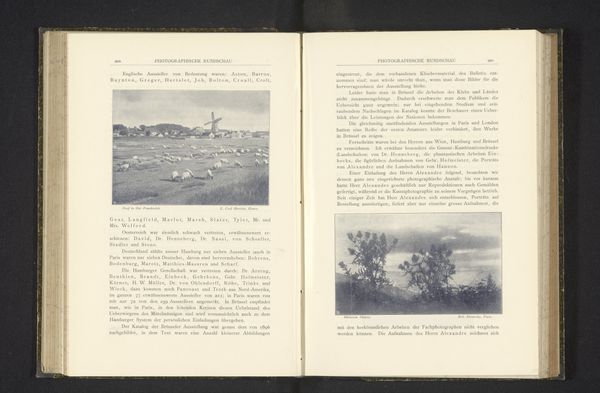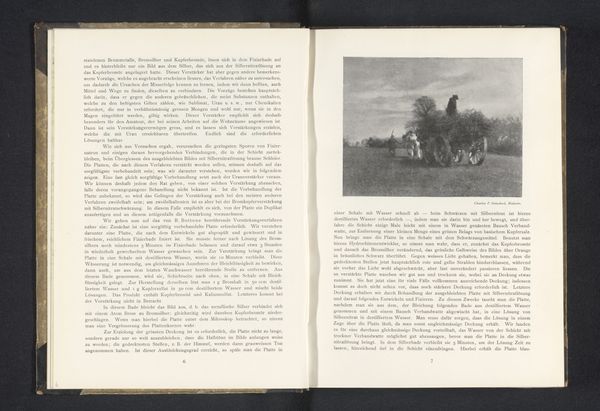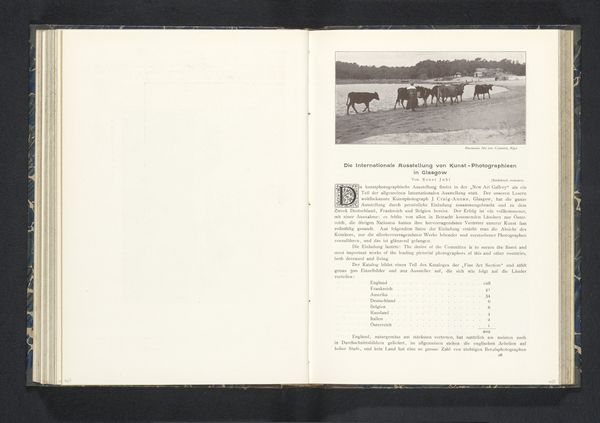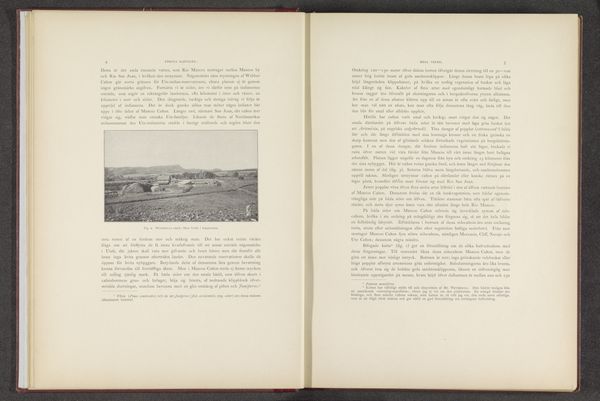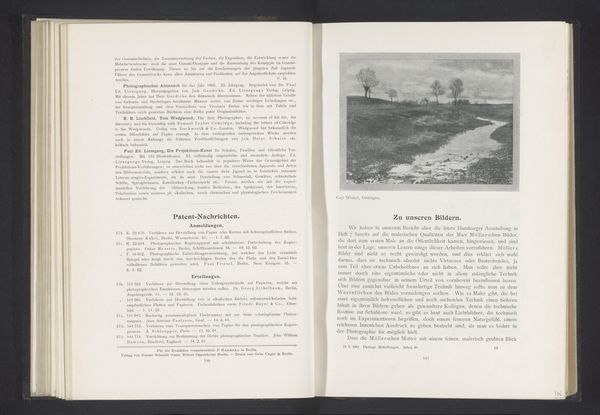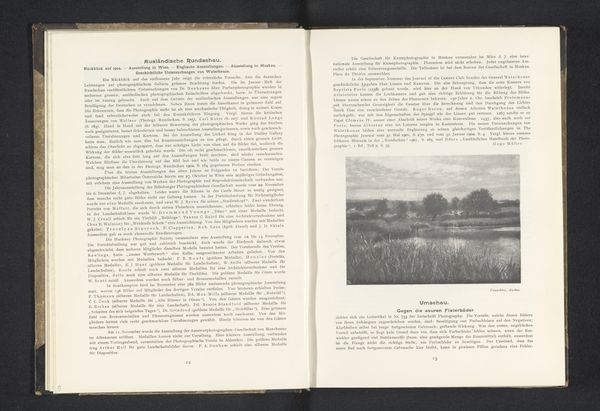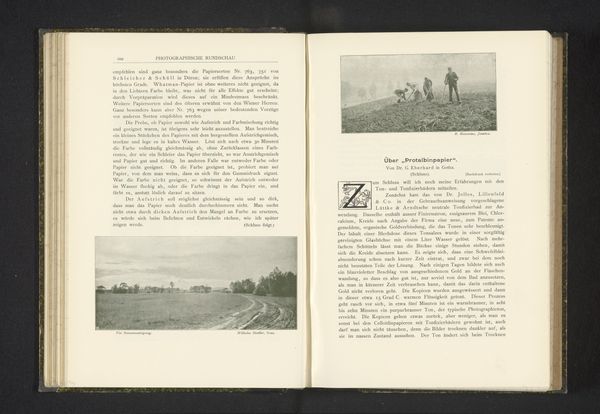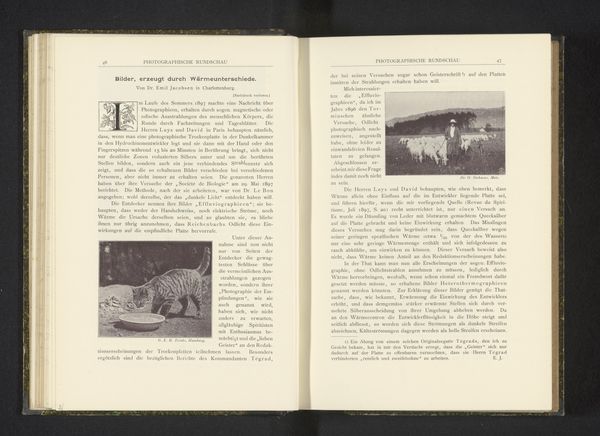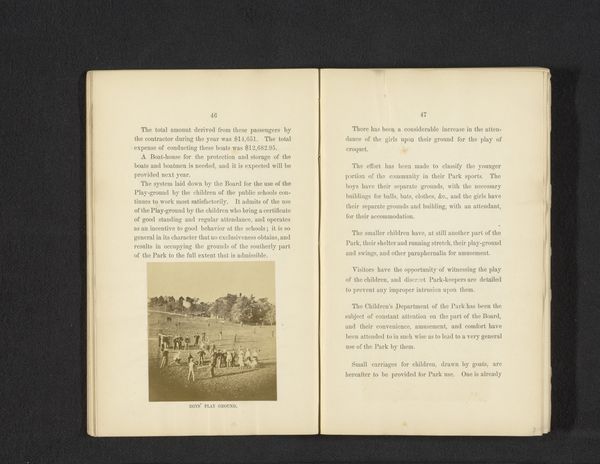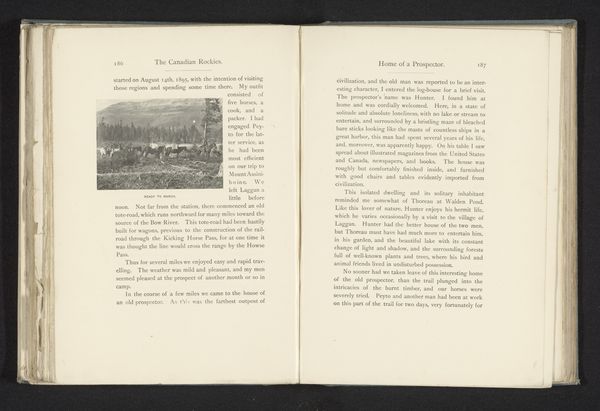
print, photography, gelatin-silver-print
#
still-life-photography
# print
#
photography
#
gelatin-silver-print
Dimensions: height 77 mm, width 125 mm
Copyright: Rijks Museum: Open Domain
Curator: This gelatin silver print, entitled "Schapen in de wei," or "Sheep in the Meadow," is attributed to Hildegard Lehnert and dates from before 1903. What is your first reaction? Editor: It strikes me as remarkably still, almost ethereal. The tonal range is so subtle. Is the goal here to provide a record, or is there something else? Curator: Knowing Lehnert, it's likely she's keenly aware of how technological reproducibility intersects with societal understandings of landscape and nature at the time. Prints like these were being mass-produced for instructional and decorative purposes, standardizing views and promoting specific visual relationships between industry, pastoral life, and animals. Editor: I notice how she carefully arranged elements into distinct layers. There’s the hazy stand of trees forming a dark backdrop, and then this undulating plane of pasture punctuated by groupings of sheep, acting like soft brushstrokes across the land. Do you see this as symbolic in any way? Curator: Given the era, and photographic trends around documentation and record keeping, Lehnert’s print raises questions about photographic labor. The very act of framing, focusing, and exposing film transforms rural scenes into carefully considered commodities that also served a decorative purpose. I imagine the original buyer selecting it from an array of landscape options for their home. Editor: What interests me most is how she guides the eye across the meadow and into a contemplative, muted state, achieving this delicate sense of harmony by arranging these soft bodies. It is less about raw, photographic record than it is a tonal exploration and a compositional interplay. Curator: I find it interesting that you highlight the aesthetic composition of forms rather than their utilitarian application; a perfect illustration, I would argue, of the blurred line between documentation, technology, and art as it played out in the popular photographic market around 1900. Editor: Seeing it that way makes it more powerful somehow. The photo appears simple at first, but when one focuses on materials and process it is like the image becomes much denser, almost obscuring that moment it seemed to capture. Curator: Indeed. We move between the aesthetic, material analysis and this helps us reframe our perception of nature.
Comments
No comments
Be the first to comment and join the conversation on the ultimate creative platform.
